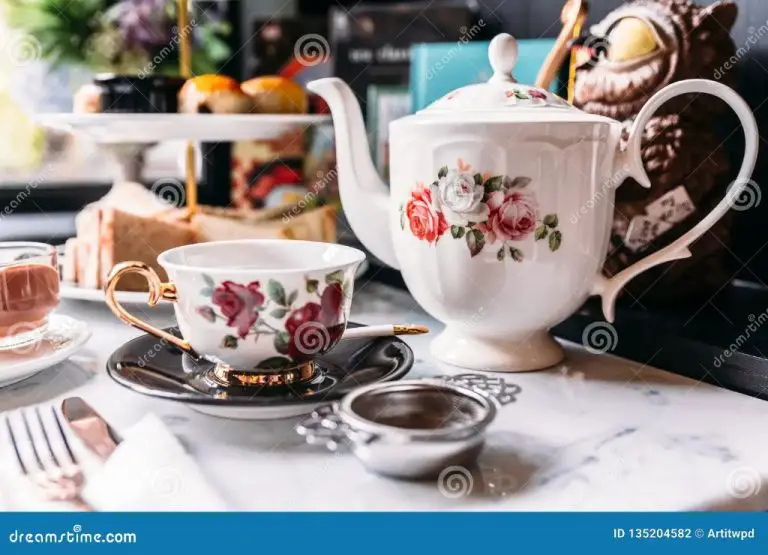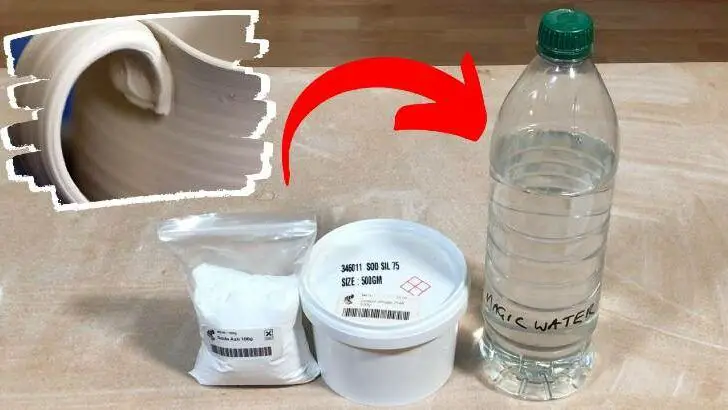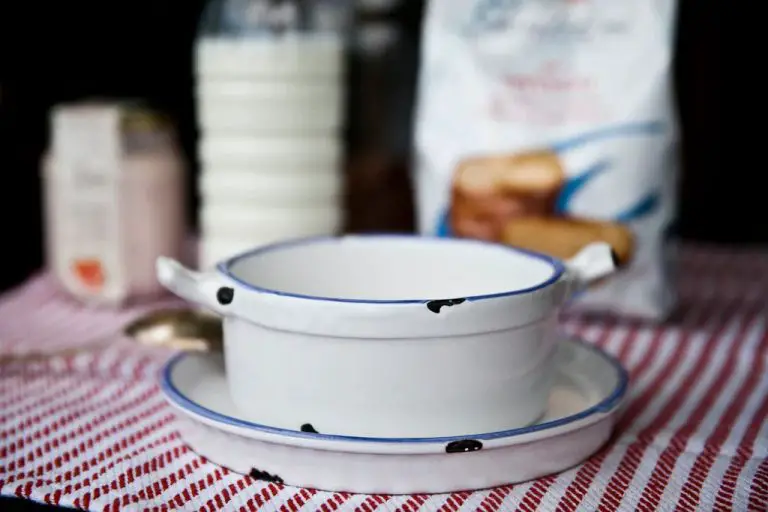How Can I Soften Hardened Clay?
Hardened clay is clay that has dried out and become stiff and brittle, making it difficult to manipulate and sculpt. This usually happens when air dries out the moisture in the clay over time. Clay can also become hardened if it was not properly stored in an airtight container or plastic wrap.
There are a few reasons why you may need to soften hardened clay:
- If you want to reuse old clay instead of throwing it away
- To be able to sculpt, shape, mold, or craft with clay that has dried out
- To soften clay that was purchased or found already hardened
- To restore clay’s soft, pliable texture after improper storage
- To rehydrate clay that has dried out during a project
The good news is that there are several methods you can use to rehydrate and soften hardened clay so it becomes workable again.
Gather Your Supplies
To soften hardened clay, you’ll need a few basic supplies:
- A work surface such as a table or countertop
- Plastic wrap to cover the clay
- Water and spray bottle to mist the clay
- Glycerin if using that method
- Vinegar or vegetable oil as an alternative to glycerin
- A clay softening product if using that method
- A rolling pin or acrylic rod for kneading
Make sure to have all your supplies ready before starting the process. A spray bottle, plastic wrap, water, and kneading tools will likely be necessary no matter which technique you choose.
Rehydrate the Clay
One of the easiest ways to soften hardened clay is to rehydrate it with water. Place the hardened clay in a plastic bag or airtight container and add just enough water to make the clay damp. Start with small amounts of water and mist or spray the clay, rather than soak it, to avoid over-saturating it. Seal the container and let the clay sit for 24 hours so the water can penetrate through the clay. Then, knead the rehydrated clay with your hands until it reaches the desired consistency. The water helps loosen the clay particles so they move freely again. Be careful not to add too much water or the clay will become sticky. Rehydrating brings clay back to a pliable, workable state so you can continue your project.
Use Glycerin
One of the easiest and most effective ways to soften hardened modeling clay is by mixing in glycerin. Glycerin is a clear, odorless liquid that has strong humectant properties. This means it attracts moisture and helps keep clay soft and pliable.
To use glycerin, start by putting the hardened clay in a bowl and adding just a few drops of glycerin. Use a spoon or fork to mix the glycerin into the clay, kneading it together. The glycerin will help rehydrate the clay. Continue mixing and kneading until the clay regains a smooth, soft texture.
Add more glycerin, a few drops at a time, if the clay is still too firm. Be careful not to overdo it with the glycerin or the clay can become sticky. The ideal amount varies based on the quantity and type of clay. Start with only 2-3 drops per ounce of clay.
Glycerin keeps clay soft by preventing it from drying out. The moisture-locking properties mean you can store glycerin-conditioned clay in an airtight container without it hardening again. This makes glycerin one of the best choices for restoring old, dried out clay.
Try Oil or Vinegar
Oils and vinegars are household items that can be used to soften hardened clay. When clay dries out, it becomes hard and brittle. Oils and vinegars help reintroduce moisture into the clay to make it malleable again.
Oils such as vegetable oil, olive oil, or mineral oil can be massaged directly into the clay. Use just enough oil to moisten the surface and slowly work it into the clay. The oil fills in the pores and allows the clay to become flexible again. Too much oil can leave residue on the clay, so use it sparingly.
Vinegar can also be used by mixing it with some water. The acidic properties of vinegar help break down any minerals in hard water or deposits in the clay that may be causing it to be stiff. Make a 50/50 vinegar and water solution and spray, brush or sponge it onto the clay slowly. Let it soak in before kneading the clay again.
Both oil and vinegar introduce moisture and liquids that bring hardened clay back to a smooth, workable texture. They offer simple household solutions before having to purchase commercial clay softeners.
Use a Clay Softener
You can purchase commercial clay softeners that are made specifically for conditioning clay and bringing it back to a workable state. These products typically contain varying ingredients like propylene glycol, oils, waxes, and other emollients that help reintroduce moisture into the clay.
Simply follow the product instructions on how much softener to use and massage it thoroughly into the hardened clay. It may take some time and effort, but the clay softener will eventually penetrate into the clay and make it malleable again.
Clay softeners can be especially helpful for very stubborn, bone-dry, or dense clay that has completely hardened. Just be careful not to over-soften the clay or make it too sticky.
Knead the Clay
Kneading is one of the most effective ways to soften hardened clay. The motion of kneading helps loosen the clay particles and realign them, making the clay more pliable. When kneading, use the palms of your hands to press into the clay and push it against the work surface. Fold the clay over itself and continue pressing and folding. The warmth and friction from kneading will soften the clay. Knead for 5-10 minutes until the clay is smooth and supple. Avoid over-kneading, as this can dry out the clay. Knead just until the clay reaches the desired softness.
Avoid Overworking
While kneading and manipulating hardened clay is necessary to soften it, take care not to overwork the clay. Excessive kneading, folding, and stretching can cause the clay to become dry and crumbly. The clay particles will start to break down, resulting in a gritty or dusty texture.
A good rule of thumb is to knead just until the clay is pliable enough for your purposes. Resist the urge to keep kneading well beyond this point. The clay will let you know when it has been sufficiently softened through its texture and consistency. Rushing the softening process by aggressively working the clay will likely do more harm than good.
Targeted, gentle kneading is best to bring the clay back to life. Monitor the clay closely and stop once it reaches the desired soft, malleable state. With care and patience, you can avoid over-manipulating the clay as you coax it back to softness.
Store Properly
Once you’ve softened your clay, it’s important to store it properly to keep it soft and pliable for your next project. Here are some tips for storing softened clay:
- Wrap the clay tightly in plastic wrap or place it in a sealed plastic bag, squeezing out any excess air. This prevents the clay from drying out.
- Store the wrapped clay in an airtight plastic container or ziplock bag. Make sure the clay is completely sealed from air.
- Keep the clay away from direct sunlight and heat, which can cause it to dry out. Store it at room temperature in a cupboard or drawer.
- Consider slipping in a damp paper towel or piece of cloth in with the wrapped clay to create a bit of humidity and keep it softer for longer.
- For long term storage, you may want to consider freezing the wrapped clay. Let it fully thaw in the fridge before using again.
- If storing clay for more than a few weeks, knead it briefly before using to restore elasticity.
With proper storage techniques, you can keep your conditioned clay soft for weeks or months before needing to rehydrate it again.
When to Give Up
There comes a point when clay cannot be revived and is no longer workable for projects. If the clay is extremely dry and brittle or has many cracks throughout, attempts to soften it will likely fail. Old clay that has been exposed to extreme temperature fluctuations or improper storage may be too far gone.
Signs that clay is beyond saving include:
- Crumbling when handled
- Flaking apart
- Unable to hold any shape
- Multiple deep cracks
- Grainy texture
- Sections that feel sandy
At this stage, the clay has lost essential moisture and plasticity. Any efforts to soften will only result in further crumbling. It is best to discard severely hardened clay and start fresh with a new block or package. While it can be disappointing to say goodbye to clay past its prime, take it as an opportunity to begin a new creative endeavor!



